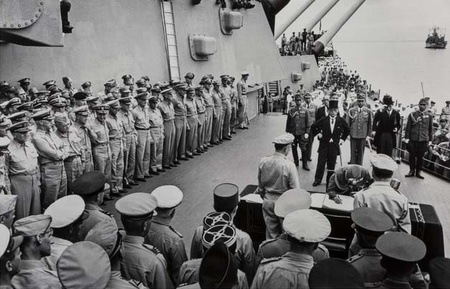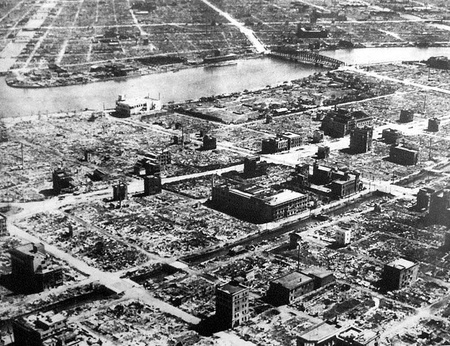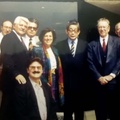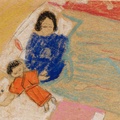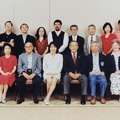On September 2, 1945, the Pacific War officially came to an end. Aboard the battleship USS Missouri , docked in Tokyo Bay, Japanese Foreign Minister Mamoru Shigematsu and American General Douglas MacArthur signed the Act of Unconditional Surrender of Japan.
In the months before the surrender and the dropping of the atomic bombs in August, the Japanese people had already paid a high price of suffering in the face of the merciless bombings by North American aircraft that had left more than 60 cities in ruins and caused the death of more than 200 thousand people. The Japanese army was already defeated, the countries invaded by the imperial army had already been recovered by the allied forces. The war economy that the empire had set up was totally dislocated: its industries destroyed and the main resources and supplies that were brought from abroad, such as oil, no longer reached Japan because the merchant navy had been sunk. Even so, the military high command and the American president, Harry Truman, decided to drop two atomic bombs on the cities of Hiroshima and Nagasaki, immediately adding another 200,000 deaths to those already recorded.
The months and years to come after the terrible catastrophe left by the war would be just as painful due to the lack of food and essential goods to survive. Dozens of Mexican children and young people, children of Japanese immigrants who were born in Mexico, witnessed these terrible events. The kiboku nisei (second-generation Japanese-Mexicans), as they were called, had gone to Japan to study or visit their relatives. I recover the story of three of them who, fortunately, are still alive: Michie Hiramuro, Jorge Ito and Ernesto Matsumoto.
Michie Hiramuro was born in the city of Guadalajara. When she was just a one-year-old baby, Michie, along with her mother and two older brothers, moved to Hiroshima in 1941, where her parents were born. Toraichi, Michie's father, was one of the pioneer immigrants who first came to work in Peru and in 1912 he moved to Mexico in search of better living and working conditions, where he worked for the North American railroad company Souther. Pacific until years after the end of the war. Hiramuro's financial income allowed him to send his family to Hiroshima where the war trapped them and separated them for 10 years until they were able to return to Guadalajara.
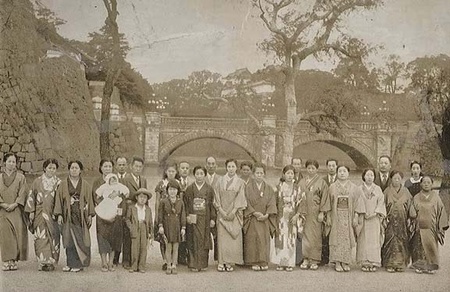
The Hiramuro family witnessed the dropping of the atomic bomb and fortunately managed to survive because they did not live near the epicenter of the explosion. On the morning of August 6, 1945, Michie was with his mother at the neighborhood assembly, tonarigumi , which routinely met to organize the distribution of food and support the efforts that the war demanded of them. When the bomb exploded, Michie only remembers the flash of a light so intense that it blinded her for a moment and the enormous force that threw them to the ground. After the roar and falling objects, a blanket of darkness covered the entire space. During the night, she and her mother had to sleep in a sesame field that was located next to their home because the house, in addition to being damaged, had tilted. Night came and the only light that illuminated was the one that came from the flames in which the city had been left. Her mother's concern focused on knowing the whereabouts of her eldest daughter, Clara, who was studying but supported herself with her job in a factory and did not return to sleep. His older brother, Fernando, was studying in the last grade of primary school and by government instructions all the older students had moved to the countryside in order to protect them from the bombings.
The next day Clara and Fernando returned and together with the neighbors managed to straighten the house, collect the debris and repair as best as possible the roof of the building that had multiple holes. The weeks and months that followed were ones of greater hardship than they had already faced during the war. The family had not received any help from Toraichi since the beginning of the war because diplomatic and all kinds of relations with Mexico were broken and they only received a few letters. Throughout the year of 1946, famine was very severe, food production was insufficient and inflation had reached such limits that no one accepted money, so commercial transactions were carried out through barter. Michie's mother had taken a sewing machine from Mexico with which she mended the clothes of people who paid her for her work with some goods that would in turn be exchanged for food that peasants sold on the outskirts of the city of Hiroshima. At the beginning of 1946, a letter finally arrived from Toraichi with food and products that the North American occupation authorities allowed to be introduced from then on to help alleviate the severe misery.
That year, Toraichi began the procedures so that his wife and three children could return to Mexico. The occupation government was the one that had to authorize their departure, but the Mexican government did not have a diplomatic headquarters, so it was the Swedish embassy, in charge of Mexican affairs in Japan, that issued them their passports in 1950.
Jorge Ito was born in Mexico City in 1925. His father worked at the Japanese consulate and although this forced him to travel constantly, Jorge studied all of primary school and the first grade of his secondary studies in Mexico until the year In 1937 his family moved to Japan.
During the war Jorge began his engineering studies at Meiji University. As the conflict escalated and the result was unfavorable for Japan, the Japanese government massively incorporated the entire population into supporting the war. Students were therefore not exempt from supporting productive activities such as carrying out and participating in military activities to defend Japanese territory.
The most intense stage of incorporation of the entire population occurred in the years of 1944 and 1945 at the time when North American bombers massively attacked the industrial centers, ports, railways and in general all the infrastructure that sustained the war. With the purpose of demoralizing the population, the bombers stopped being strategic; that is, only destroying military and economic facilities that served to sustain the war, and targeted the civilian population and large cities.
Jorge Ito lived in Tokyo and by March 1945 the capital received the most intense attack recorded throughout the entire world war. The North American air force launched, in addition to destruction bombs, napalm incendiary bombs that burned the Japanese buildings, which were mostly made of wood. The city was left in ashes with nearly one hundred thousand dead.
As a student, Ito actively participated in surveillance and the construction of underground shelters in Tokyo. Initially, the students were in charge of guarding their own study centers at night, ensuring that they were supplied with large quantities of water and sand in case of fires.
As food became scarce, the government gave students tickets to eat in special restaurants. The rationing began to be so severe that Jorge saved the tickets for the three meals to eat just one of them and feel satisfied at least once throughout the day.
At the end of the war, Jorge Ito managed to return to Mexico in 1947 thanks to the financial help of a chaplain from the North American occupation army. Contact with that officer facilitated the extension of his North American visa to travel by boat to San Francisco and later travel by train to Mexico City. At 95 years of age, he continues to educate generations of children and young people who practice the sport of judo.
Ernesto Matsumoto was born in Mexico City in 1923. His grandfather Tatsugoro had arrived in Mexico at the end of the 19th century and thanks to his profession as uekishi (landscape architect) he captivated society with his flower and garden arrangements and was hired by the government of President Porfirio Díaz to take charge of the floral arrangements of the presidential residence, then in the Chapultepec Castle, as well as the attached forest. Since then Tatsugoro, together with his son Sanshiro, created a large flower arrangement and greenhouse company that beautified the city.
When little Ernesto turned 10 years old, he was sent by his father to learn the Japanese language and be educated in that country with the purpose of taking care of the family's business. When the Pacific War began in 1941, young Ernesto entered the Tokyo University of Agriculture where he specialized in livestock farming. In 1943, due to the army's need for more soldiers, the government canceled the extension that allowed university students not to perform their military service. Ernesto entered the Naval School in Ryojun (Puerto Arturo) where he graduated as a naval officer. Later in 1944 he was sent to the Tateyama school where he specialized in handling anti-aircraft artillery.
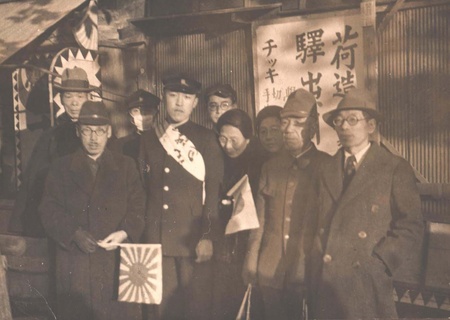
Faced with constant harassment from North American aviation, which already had open skies to bomb any city, Matsumoto was sent to the island of Hachijo, located 280 kilometers from Tokyo Bay, as part of the anti-aircraft shield to defend the capital from a future invasion. . The range of the Japanese artillery was incapable of reaching the height at which the huge B-29 bombers flew, so in reality the naval unit only saw the waves of bombers that destroyed the capital pass by.
Despite the surrender of Japan in the month of August, it was not until October when the North American military authorities took possession of the island of Hachijo, dissolved and disarmed the military units, and in the month of November Ernesto returned to Tokyo to return to his studies. university students.
In 1947, thanks to the relations that the Matsumoto family maintained with Mexican authorities, the Mexican Foreign Ministry expedited the repatriation of Ernesto, who arrived at the Mexico City airport in the month of June. At 97 years of age, Don Ernesto has a wonderful memory to continue enlightening us with his knowledge about this stage of our history.
Upon returning to the country, Michie, Jorge and Ernesto started their families and have not stopped working without resting to this day. Not only their children and grandchildren should be proud of what they have left us and what they have contributed to the country where they were born.
© 2020 Sergio Hernández Galindo


